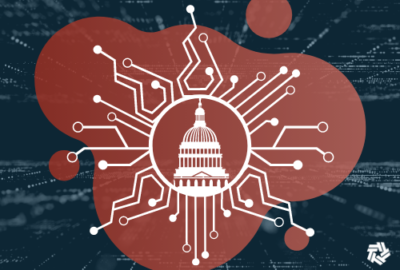- Bad computer password practices could lead to phishing attacks at the Interior Department. Auditors cracked nearly 22% of passwords used by employees at the Interior Department. That includes 288 accounts with elevated privileges and 362 accounts used by senior government officials. The report from the Interior inspector general said the agency does not consistently use multifactor authentication. Interior disputed how the IG characterized some of the findings and risks in the report, but concurred with recommendations to strengthen passwords and to prioritize the adoption of multifactor authentication.
- The National Institutes of Health IT Acquisition and Assessment Center (NITAAC) is extending its CIO-SP3 contract through April 29. NITAAC made the decision after continued protests delayed the follow-on contract, CIO-SP4. NITAAC now believes it will make awards for CIO-SP4 by March 15. There still are three protests currently open before the Government Accountability Office. NITAAC had extended the current contract two other times since the initial performance period was supposed to expire last May.
- Unclassified Defense Department procurement bounced back in 2022 with $436 billion in spending, representing a 6.7% increase over the previous year. Bloomberg Government said the increase comes from inflation and money spent on the COVID-19 response, the war in Ukraine, increased foreign demand for U.S. weapons, and a backlog of investments in military infrastructure. The Navy saw the highest jump in procurement spending for 2022, up 11% to $131 billion. Last year’s total unclassified procurement spending reached DoD’s second highest annual total ever.
- The General Services Administration has a plan to address contractors’ frustration with the schedule modification process. GSA is about to enter prong two of a three-pronged strategy to address the time it takes vendors to modify their schedule contracts. Erv Koehler, the assistant commissioner of the Office of General Supplies and Services in the Federal Acquisition Service, said after surging people and resources to address the backlog created by inflation, two other initiatives will continue to decrease the modification timeline. He said better data from the 4P platform and an upgraded catalog will make the process more efficient. GSA also is starting a pilot with vendors on the office supplies schedule to test out a market basket approach to the catalog. (GSA surged resources to meet inflation-related schedule modifications, now onto longer term improvements – Federal News Network)
- Federal employees who violate specific workforce rules will soon have to pay even more in penalties. The Office of Government Ethics finalized an increase in the dollar amount of penalties for feds who, for example, falsify a public financial disclosure report. Depending on the type of violation, penalized feds could now pay up to $71,000.
- Federal employees have just a few days left to donate to the Combined Federal Campaign. The Office of Personnel Management is making a final push encouraging feds to donate to the CFC. This year’s annual federal donation campaign began in September. There are 5,000 charities participating. In last year’s CFC, federal employees gave a cumulative total of $80 million. The program has collected $8.65 billion in total charity donations since it was created in the 1960s. For this year’s campaign, the last day to donate is January 14 .
- The Office of Personnel Management is getting up to speed standing up a governmentwide marketplace for human resources IT solutions. OPM spent much of last of last year going through an HR IT inventory and modernization roadmap with some of the biggest agencies in government. Steve Krauss, a senior adviser at OPM for its HR Quality Services Management Office, said that roadmap helped OPM get a better understanding of the state of HR IT systems across the federal government, as OPM looks to standardize the market for federal HR solutions and services. “There are opportunities to help the federal government speak with one voice and operate as more of an enterprise customer,” Krauss said. (OPM HR shared services office looks to help agencies ‘speak with one voice’ – Federal News Network)
- Agencies have received new guidance for managing text messages and other electronic records. The National Archives and Records Administration is expanding the so-called “Capstone” approach beyond email. The approach lets agencies manage records based on the role of the official that creates them. It allows them to streamline and automate how they manage electronic records. The expansion of Capstone comes as some agencies struggle to harness a growing set of digital records, including texts, chats and ephemeral messaging apps, like WhatsApp.
- The Postal Service’s regulator has spelled out its goals for the next five years. The Postal Regulatory Commission, in its new strategic plan, looks to regulate USPS in a way that anticipates and adapts to changes in its operations. It also is looking to improve communication and outreach to policymakers and USPS customers, as well as the public. The commission will also move to strengthen its infrastructure and ensure it has the workforce it needs to keep up with its workload.
- A new partnership called Jump 2.0 will focus on high-risk, high-payoff research at seven themed centers aimed at accelerating disruptive microchip technologies. The Defense Advanced Research Projects Agency (DARPA) will team up with the Semiconductor Research Corporation, and other partners from industry and academia, to improve performance across a range of electronics systems. Each of the research centers will be run at a different university, and include topics like artificial intelligence systems and architectures, and high-performance, energy-efficient devices. The program represents DARPA’s latest effort to partner with industry in developing advanced microelectronics.
Copyright
© 2025 Federal News Network. All rights reserved. This website is not intended for users located within the European Economic Area.





